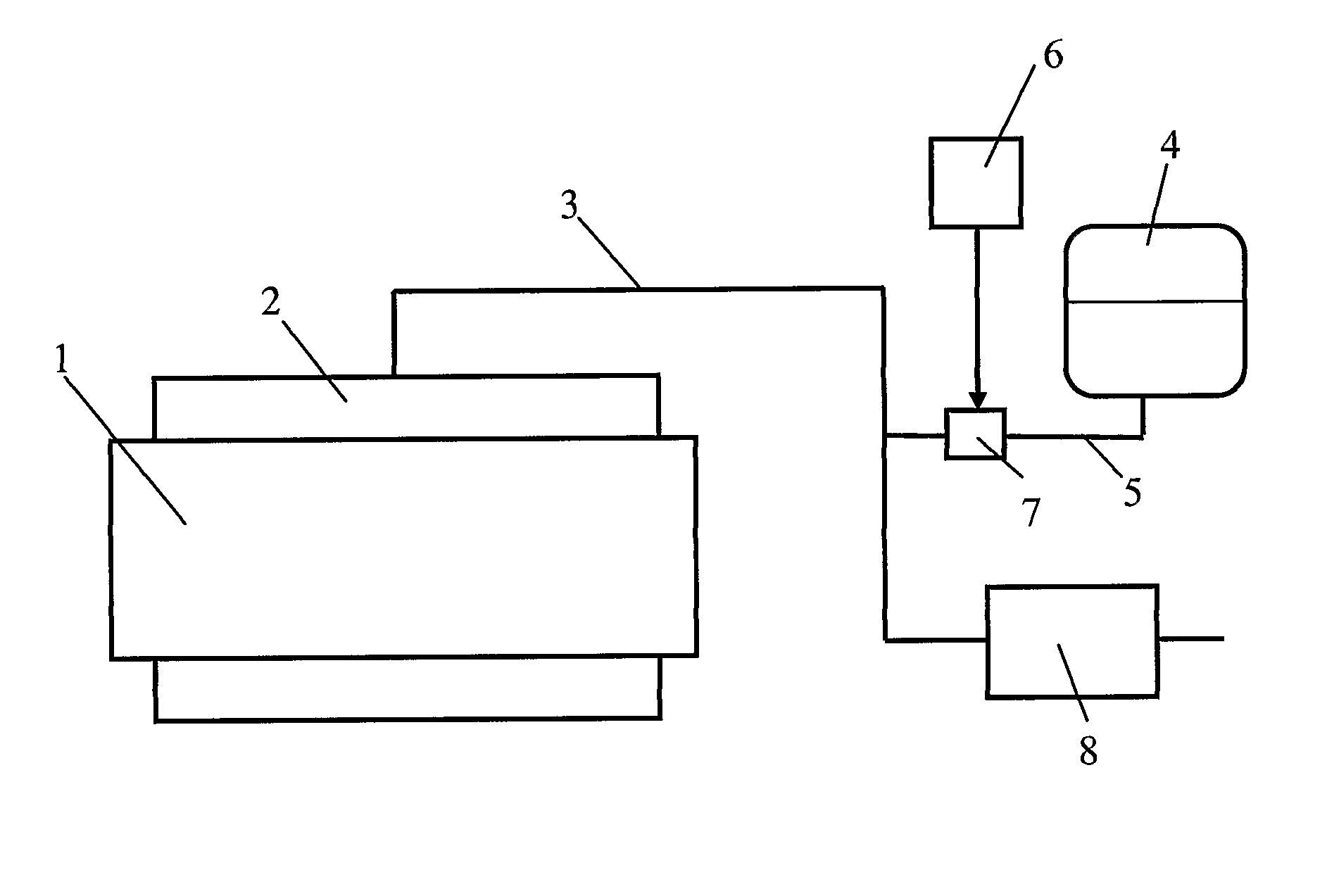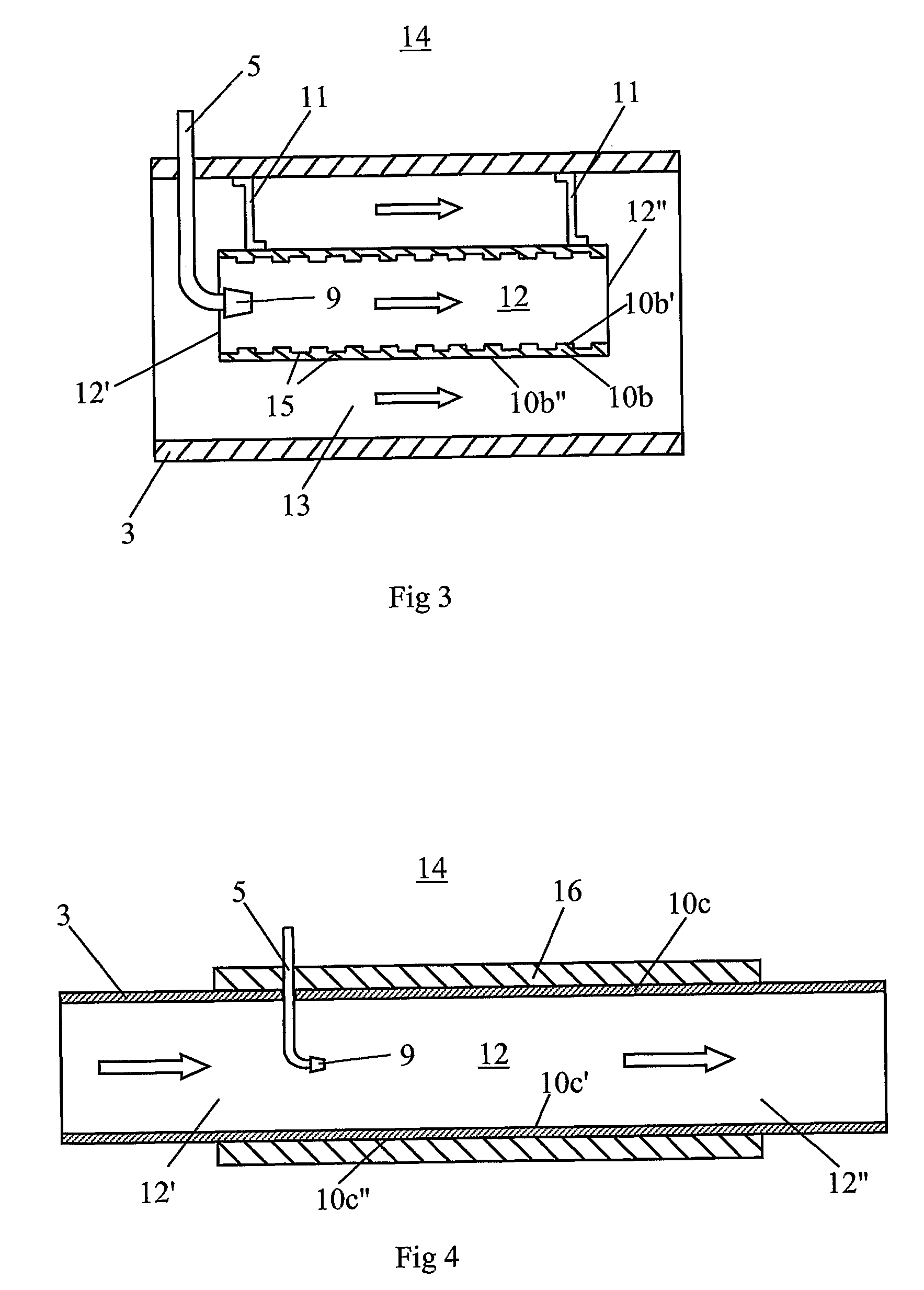Arrangement for supplying a medium into an exhaust gas conduit in an internal combustion engine
a technology of exhaust gas conduit and medium, which is applied in the direction of lighting and heating apparatus, combustion types, separation processes, etc., can solve the problems of reducing the temperature on the first wall surface of the exhaust line, vaporising the medium, etc., and achieves the effect of reducing the cooling effect of the environment on the inside wall surface, and reducing the temperature of the first wall surfa
- Summary
- Abstract
- Description
- Claims
- Application Information
AI Technical Summary
Benefits of technology
Problems solved by technology
Method used
Image
Examples
Embodiment Construction
[0025]FIG. 1 depicts a combustion engine in the form of a diesel engine 1. The diesel engine 1 may for example be intended to power a heavy vehicle. The exhaust gases from the cylinders of the diesel engine 1 are led via an exhaust manifold 2 to an exhaust line 3. In this case the exhaust line 3 is provided with an arrangement which effects catalytic exhaust cleaning according to the method known as SCR (selective catalytic reduction). This method entails a urea solution being added to the exhaust gases in the diesel engine's exhaust line 3. The urea solution is stored in a tank 4 and is led via a line 5 to the exhaust line 3. A control unit 6, which may be a computer unit with suitable software, controls the supply of the urea solution which is led to the exhaust line 3 by activating a pump 7. The control unit 6 may use information concerning current fuel consumption and the temperature of the exhaust gases to calculate the amount of urea solution which needs to be added for optimu...
PUM
| Property | Measurement | Unit |
|---|---|---|
| diameter | aaaaa | aaaaa |
| diameter | aaaaa | aaaaa |
| degree of heating | aaaaa | aaaaa |
Abstract
Description
Claims
Application Information
 Login to View More
Login to View More - R&D
- Intellectual Property
- Life Sciences
- Materials
- Tech Scout
- Unparalleled Data Quality
- Higher Quality Content
- 60% Fewer Hallucinations
Browse by: Latest US Patents, China's latest patents, Technical Efficacy Thesaurus, Application Domain, Technology Topic, Popular Technical Reports.
© 2025 PatSnap. All rights reserved.Legal|Privacy policy|Modern Slavery Act Transparency Statement|Sitemap|About US| Contact US: help@patsnap.com



